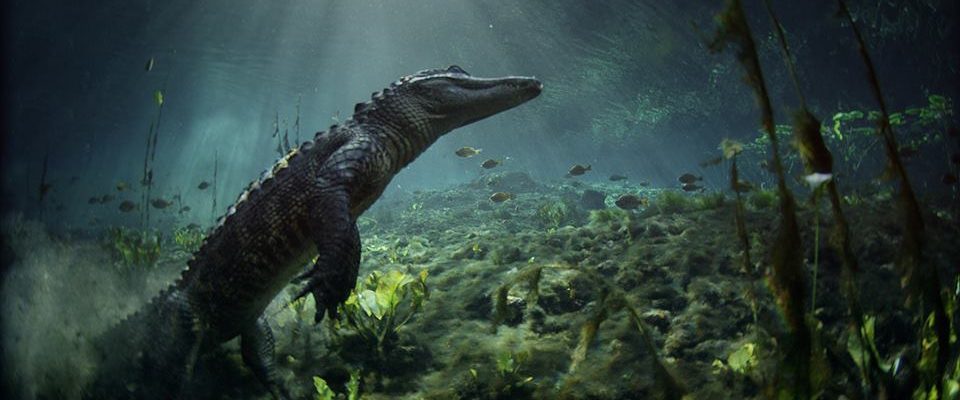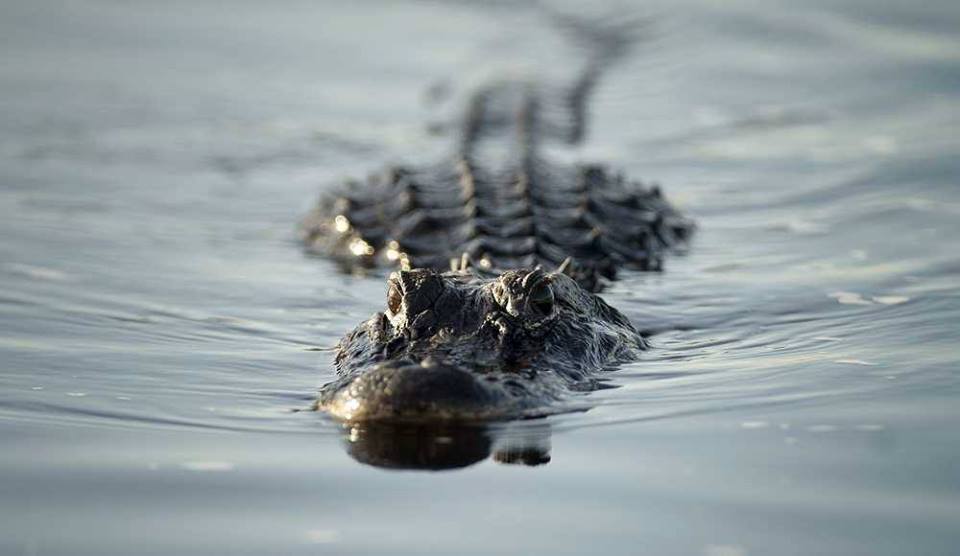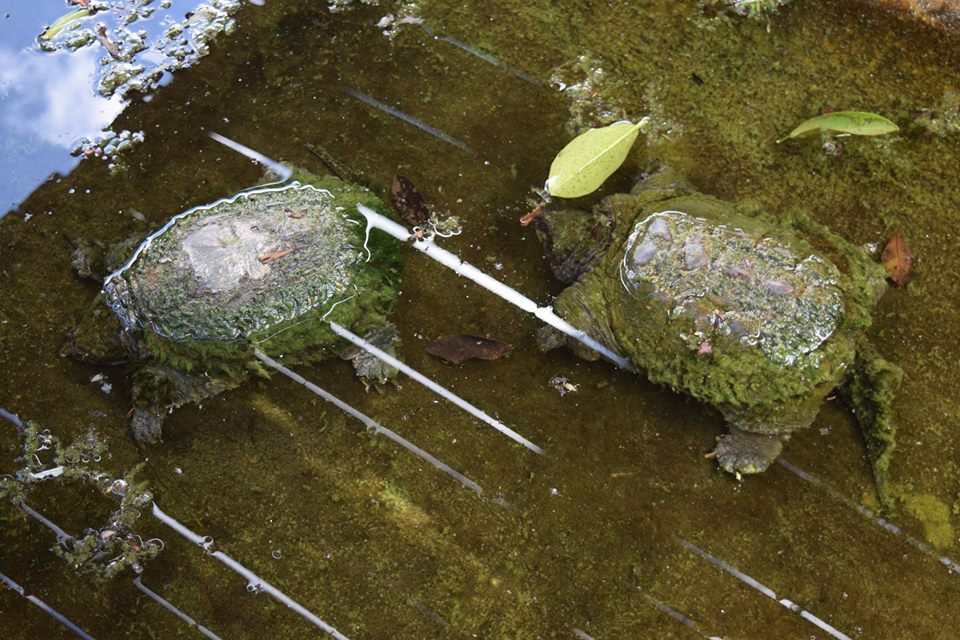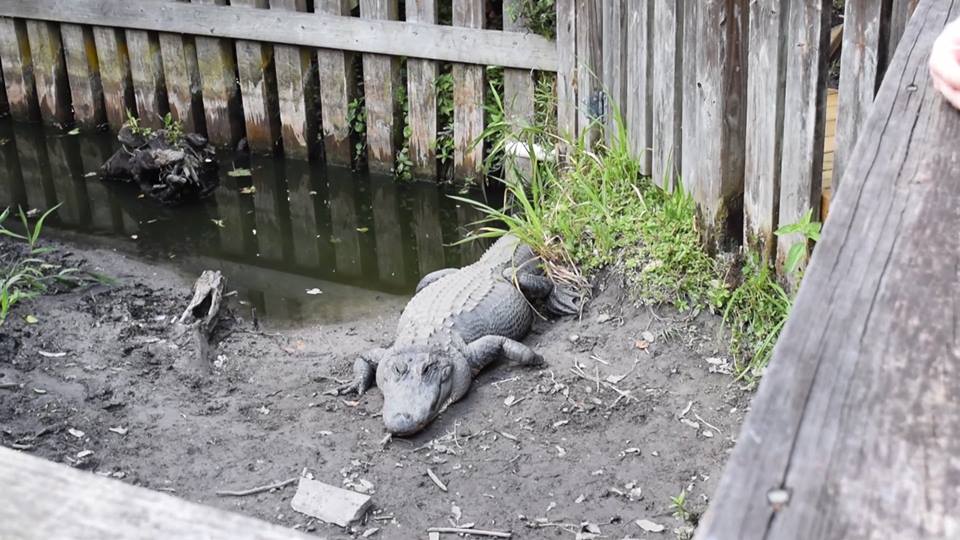
Water once covered most of Florida. It created vast saw grass prairies, eerie swamps and smelly mangrove forests. The area was considered useless and impenetrable, full of poisonous snakes, alligators and mosquitoes. It is more than that.
The Everglades is a wonder of nature. It is a blending of ecosystems that are sustained by the environment and the animals that live there.
Fact 1: The Everglades is a river- Most people think The Everglades is a swamp. The Everglades is actually a river. The Everglades begins at the Kissimmee River, near Orlando. The Kissimmee River flows into Lake Okeechobee. This lake is very shallow. In the wet season, it overflows. This creates a river that is 50 miles (80 kilometres) wide and over 100 miles (160 kilometres) long. The river is only a few inches deep. It flows south across the state of Florida very, very slowly, covering about a quarter of a mile (400 metres) every day. Eventually it reaches the ocean.
Fact 2: The Everglades used to be twice as big as it is now- The Everglades used to be twice as big as it is today. Water flowed as one big sheet across the tip of south Florida and into the seas, from the Ten Thousands Islands area all the way around to Biscayne Bay. Early settlers thought the Everglades would make good farming land and wanted to establish communities. In 1848, plans were made to drain water from The Everglades. Canals were built. In the wet season, the canals overflowed and water flooded back into the area.
Railroad lines and luxury hotels were built along the east coast of Florida during the 1890s. New canals were built to drain more land and help prevent flooding. Citrus and sugar cane farms were established. Mangroves were cut down and replaced with palm trees. South east Florida became an area of expensive real estate. Hurricanes in 1926 and 1928 caused Lake Okeechobee to flood, killing many people. A 66 mile (106 kilometre) long dike was built around the southern edge of the lake. A massive canal connected it to the Caloosahatchee River. All of these changes to the water flow have reduced the size of The Everglades. Half of The Everglades area is now agricultural or city areas.

Fact 3: The Everglades wetlands are 4,000 to 6,000 years old- For millions of years, Florida was the floor of a shallow sea. Its base of sedimentary and volcanic rock was covered by another layer of sedimentary rock. Sea levels rose and fell at least seven times. Florida was dry land, only to be covered by the sea again.
Six million years ago, layers of sand, silt, shells, tiny fossilized organisms and calcium carbonate were compressed and became a porous limestone. Water filtered through the limestone. It became trapped in big underground areas called aquifers.
Between 4,000 and 6,000 years ago, the sea level began to rise again. Rainfall increased and the water in the aquifers rose.
Rising water began to erode the limestone from underneath. Acids from rain started to dissolve the limestone from above. This created springs, small solution holes and large sink holes.
Freshwater reached the surface and created a massive wetland area. The limestone has eroded unevenly, creating small valleys and channels. This affects the flow of water through an area and that affects the type of plants that can grow there.
Fact 4: Lake Okeechobee feeds The Everglades- Rainfall and increasing water levels in the wetlands created a massive lake. Layers of peat over 13 feet (4 metres) thick were deposited throughout the area. Peat is a soil that is created by plant material rotting in water.
Along the southern edge of the lake, the peat deposits were thick enough to form a dam, keeping the water in the lake.
Today, Lake Okeechobee is the largest freshwater lake in Florida. It is 730 square miles (1, 900 square kilometres) in size. This is about half the size of the state of Rhode Island.
The lake is very shallow. It has an average depth of 8 feet 10 inches (2.7 metres), and a maximum depth of fewer than 13 feet (4 metres).
The lake is home to a variety of fish and water birds. During the wet season, the lake overflows and sends a river of water through the Everglades. Lake Okeechobee was created by the Everglades. Today, it feeds the Everglades.
Fact 5: The Everglades has two seasons- Weather conditions in The Everglades don’t change a lot. The difference between summer and winter temperatures is only about 10 to 14F (6 to 7C).
The changing of the season is determined by the change in water levels. There is a wet season and a dry season. The Everglades has an average rainfall of 60 inches (152 centimetres). Three-quarters of this occur during the wet season. The wet season goes from May to November.
Hurricanes begin to form off the coast of Florida in June. Along with tropical storms, they dump an average of 45 inches (114 centimetres) of rain on The Everglades. The dry season goes from December to April. During this time, there is hardly any rain. Everything dries up very quickly.
Fact 6: There are many different types of ecosystems in The Everglades- Sawgrass marshes (or prairies) may be only a few inches deep. They are covered in water for six to twelve months of the year. Wetland prairies are about four inches (ten centimetres) deep. They only have water for three to seven months. During this time, many varieties of water plants can thrive.
Sloughs are the deepest marshy habitats. They are rivers that channel water through The Everglades and are about three feet (one metre) deep.
Freshwater swamps are dominated by cypress trees. Air plants, such as bromeliads and orchids, grow on the sides of the trees wrapping their roots around the tree trunk.
Mangrove forests grow along the coastline. They provide a nursery for fish and other sea creatures. They also help protect the coast from damage caused by hurricanes and storms.
Hardwood Hammocks and Pinelands are both dry habitats.
Hardwood hammocks consist of broad-leafed trees such as mahogany, gumbo limbo and oak. They grow on raised levels of peat or rock that may only be a few inches out of the water.
Pinelands forests grow in the dry limestone rock. They are mainly slashing pines. There are also palms and grasses. Seeds from hardwood trees can also take root here.

Fact 7: Fire and Hurricanes keep The Everglades healthy- For thousands of years, lightning strikes have caused fires in The Everglades. Many plant species need fire to germinate their seeds. The fire also burns away vegetation that might try to take over and change an area. Grass and other plants can clog the waterways of the sawgrass prairies. Fire kills the invading plants and burns the top off the grass. The grass roots remain protected in the wet soils and the grass regrows.
Fires in the mangrove swamps stop the mangroves spreading into the fresh- water swamps.
Hardwood hammocks are surrounded by water. The soil is moist and the ham- mock is humid. This helps to protect them from the fire.
Pine trees take a long time to grow. Other trees and plants grow in the pinelands and could easily take over. When a fire sweeps through the pineland areas, these other trees are killed off. The pines can survive fire and soon grow back.
Most of the water that comes into The Everglades comes from storms and hurricanes. Water evaporates from the land and from the plants. Wind patterns move the moist air to other areas of The Everglades or out to sea. High-pressure systems in the Bermudas create tropical storms and hurricanes, which bring the water back to The Everglades.
Fact 8: Mangroves come in three colours – red, white and black- The Ten Thousand Islands are a chain of a few hundred small islands off the west coast of Florida.
Where the fresh water of The Everglades meets the salt water of the ocean, mangrove forests thrive.
There are three types of mangroves that live in The Ten Thousand Islands area. They are the red mangrove, the black mangrove and the white mangrove.
Red mangroves grow in the salt water of the sea. They bury their roots in mud flats. Sometimes roots can grow out of the branches. They drop down into the water and bury themselves in the mud. These are called prop roots. They help support the mangrove against tidal currents.
Black mangroves grow in the mud along the coastline. They may be in the water at high tide but will be exposed at low tide. They have black trunks. Black mangroves can drown if they remain underwater. Their roots are buried in the mud, but they have many smaller roots attached that stick up out of the mud. These are covered in lenticels which absorb air. This provides oxygen and allows the mangrove to breathe.
White mangroves don’t like water. They grow on the highest and driest areas of the coastline. They have salt glands on their leaves that pump out any salt that the roots take in.

Fact 9: Alligators and Crocodiles live in The Everglades. The Everglades is the only place on Earth where alligators and crocodiles live together.
Alligators like fresh water. They can be found in swamps, marshes, rivers, lakes and small bodies of water. They can be found in brackish water, but they can’t stay there for very long. Brackish water is water that is both salt and fresh water mixed.
Crocodiles are found in coastal regions and anywhere there is salt or brackish water.
Crocodiles and Alligators are part of the same reptile family. They have many things in common.
They are about the same size. Alligator males are about 13 to 15 feet (4 to 5 metres) long. Crocodiles are about 14 feet (4.5 metres) – though they can reach up to 20 feet (6.5 metres). Females are smaller. Female alligators are about 10 feet (3 metres), while female crocodiles are about 8 to 10 feet (2.4 to 3 metres).
Females build nests above the waterline to lay their eggs. If the eggs are under-water for twelve hours, they will die.
The sex of the babies is determined by temperature. At higher temperatures, the babies will all be male. At lower temperatures, the babies will all be female. At a middle range, some babies will be male and others will be female. Alligator eggs hatch between 58 and 63 days. Crocodile eggs take 85 days.
When the babies are ready to hatch, the mothers will open their nests, and help the babies get to the water.
A crocodile will stay with her babies for a day or two, then leave them to look after themselves. An alligator will stay with her babies for a year or more. Some- times the babies will stay in the same waters for two or three years before finding their own home. During this time, the alligator mother is very protective. She will come quickly if her babies call out that they are in danger.
American Alligators and American crocodiles are very shy. They prefer to run away and hide if they feel threatened.
Fact 10: Mosquitoes prefer biting alligators to humans- The wet season is mosquito season. Mosquitoes lay their eggs in damp places or in water. The eggs take about a week to hatch. The larvae need air to breathe. They hang upside down at the surface where a siphon tube pokes up into the air. Many mosquito larvae are eaten by fish, but there are still millions more that survive.
Male mosquitoes feed on fruits and plant nectar. Female mosquitoes feed on blood. They need the proteins in blood to produce eggs. There are 68 species of mosquito in Florida. Most of them do not bite humans. Human blood does not have enough nutrients for proper egg production. Mosquitoes would rather feed on a rat or an alligator than on you.
To experience these fun facts and ecosystem of Everglades book your Air boat tour with us and cherish the scenic beauty of Everglades. Contact us Now!!